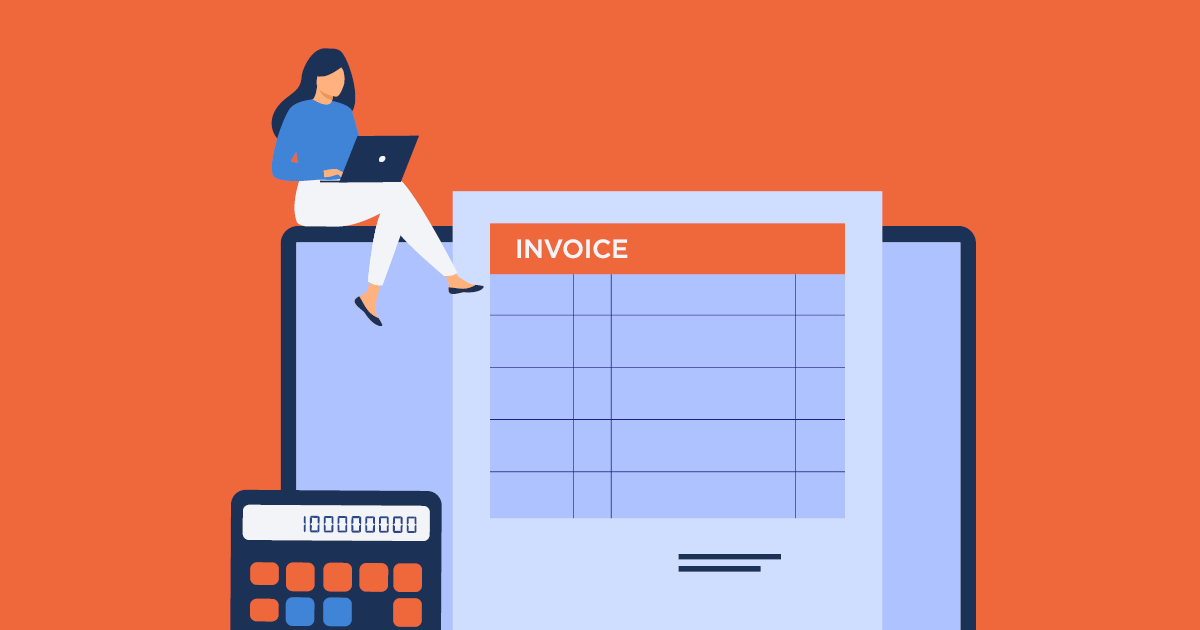According to some economists, it's only a matter of time before we feel the effects of a looming global recession. This is bad news for businesses all around the world, especially in light of the existing late payment crisis.
Around 54% of businesses are consistently experiencing late payment of invoices since COVID-19 and its impacts on the global economy, with areas like North and South America, the Middle East, and Southeast Asian countries being among the worst hit by recession-induced late payments.
When a recession hits, companies will be scrambling to get paid, and your team needs to be prepared! The good news is that many businesses previously weathered the Covid-19 pandemic-induced recession, and put in place strategies to keep days sales outstanding low despite the difficult circumstances.
In this blog post, we'll draw on effective strategies and show you seven ways to prepare your accounts receivables team for a recession.
Prepare to increase communication with customers
When it comes to a recession, the only thing you can say for certain is that everyone is going to be feeling the pinch.
Your customers are no exception. In fact, they may be struggling more than ever to keep up with their payments. That's why it's important to increase communication with them during this time.
Let them know that you're here to help and work with them to come up with a payment plan that works for both of you. By doing this, you'll build trust and goodwill with your customers, which will pay off in the long run.
A willingness to pick up the phone and discuss customer situations to find out what is holding up payments will be crucial in the coming months.
While you might be able to rely on frequent, polite email payment follow-ups, during a recession, you'll need to supplement these with friendly payment check-in calls.
Your customers are going to have a lot on their minds during this time, so make sure you're doing your part to ease their stress. Remain polite and understanding and be willing to work with them to ensure they can continue doing business with you.
You should also consider calling customers before the payment due date to check that everything is still on track. By having this conversation early, you can avoid any surprises or last-minute scrambling on either side.
By following these tips, you'll be better equipped to manage receivables during a recession and keep your business afloat.
Put processes in place to offer payment installment plans
Payment installment plans can be a great way to help customers during a recession. By allowing them to break up their payments into smaller, more manageable chunks, you can help ease their financial burden and keep them as a customer.
There are a few things to keep in mind when offering payment plans, though.
First, make sure you clearly communicate the terms of the plan to the customer. This includes the total amount they'll need to pay, how many payments they'll need to make, and when those payments are due.
Second, be sure to build in some flexibility into the plan in case the customer has difficulty making a payment. Most customers will be honest and try to stick to the plan, but life happens and things come up. By being flexible, you show that you're willing to work with your customers and are interested in keeping them as a customer long-term.
And finally, make sure you have the internal capabilities to offer payment plans. This means having the right software and processes in place to track payments and manage customer accounts.
If you can offer payment plans that work for both you and your customers, you'll be able to help more people get the products and services they need. And that's a win for everyone involved.
Credit check customers and set credit limits
Credit checking is a normal part of the onboarding process for new customers. You should have a process in place for credit checking customers before taking them on, or before starting repeat contracts, and setting credit limits based on the findings of your credit checks.
This will help you manage risk and make sure that you're not extending too much credit to a customer who may be unreliable, or unable to repay you.
However, following an initial credit check, many businesses then abandon this process and never revisit it.
Don't make that mistake.
Regularly review your customers' creditworthiness and adjust their credit limits as needed. Doing so will help you protect your business from bad debt and keep your cash flow healthy.
Using a comprehensive account receivables management system like Chaser allows you to check and monitor customers with ongoing alerts and insights.
This helps give you a clear picture of your exposure to risk at any given time, so you can make informed decisions about credit limits.
If you're not regularly reviewing and adjusting your customers' credit limits, you're leaving your business open to unnecessary risk. Get in the habit of doing this regularly, and you'll be on your way to a healthier business.
Set effective credit limits
Effective and balanced credit limits are one of the most important tools you have to manage your exposure to bad debt. By setting limits that are too high, you're increasing the chances that you'll get stuck with unpaid invoices and put your business at financial risk.
On the other hand, if you set them too low, you may miss out on sales opportunities.
The best way to find the right balance is to review your customer's credit history and payment patterns. This will give you a good idea of their ability to pay, and help you set limits that are appropriate for your business.
By taking the time to review your customer's credit history and setting limits that are appropriate for your business, you can minimize your exposure to bad debt and maximize your sales opportunities during the recession.
Utilize automation
The reality is that putting in place and executing an effective accounts receivables processes is a time-consuming task- one that can easily take up valuable resources that could be used elsewhere in the business.
One way to free up time and resources is to utilize automation. Automation can help with tasks like customer communication, invoicing, and payments.
By automating your accounts receivables process, you can free up time and resources to focus on other areas of your business.
Another benefit of automation is that it can improve operational efficiency and reduce costs.
Operational efficiency is improved because tasks are completed faster and with fewer errors. Reduced costs are another advantage of automation. When your accounts receivables process is automated, you can eliminate the need for manual processing, which can save you money.
Overall, automating your accounts receivables process can help to improve your business operations and save you money. If you are not already using automation in your business, now is the time to consider it.
During a recession, it's vital to have trained staff focused on making money rather than doing administrative tasks. By using an automated accounts receivable solution, you can free up your staff to do other tasks that will help generate revenue for your business.
In these difficult economic times, every little bit helps, and automating your accounts receivables process is one way to improve your bottom line. With Chaser's award-winning platform, you can automate your A/R process quickly and easily and reap the benefit of increased efficiency and productivity.
Set and monitor key performance indicators
Accounts receivables key performance indicators, or KPIs, are a valuable way to measure the success of your accounts receivable process. By setting KPIs and monitoring them regularly, you can identify potential problems early on and take corrective action before they become serious.
By setting a baseline KPI, such as average days to collect, you can track your progress and identify areas where improvements need to be made. You can then check changes over time to see if your process is improving. Set and track your team’s KPIs using this accounts receivables KPIs tracking spreadsheet for google sheets and excel.
There are a number of KPIs you can set for your accounts receivable process, but some of the most important include:
- Average days to collect - This KPI measures the average number of days it takes your company to collect payments from customers and is a good indicator of the overall health of your accounts receivable process.
- Accounts receivable turnover - This KPI measures how quickly your company is collecting payments from customers and is a good indicator of the efficiency of your accounts receivable process.
- Percentage of invoices paid within 30 days - This KPI measures the percentage of invoices that are paid within 30 days of being issued and is a good indicator of the timeliness of your accounts receivable process.
- Percentage of invoices paid within 60 days - This KPI measures the percentage of invoices that are paid within 60 days of being issued and is a good indicator of the overall health of your accounts receivable process.
- Bad debt percentage - This KPI measures the percentage of invoices that are not expected to be paid and is a good indicator of the overall health of your accounts receivable process.
Each business will have different KPIs based on its specific needs, but these are some of the most common ones used to measure accounts receivable success.
Monitoring your KPIs on a regular basis can help you ensure that your accounts receivables process is running smoothly and efficiently. If you notice any red flags, such as a sudden increase in the average days to collect, you can take steps to rectify the situation before it becomes a bigger problem.
At Chaser we say if you don’t measure it, you can’t improve it - see our recording of 6 KPIs you can improve in your accounts receivables team performance and case studies of the impacts these have on businesses.
Regularly monitoring your KPIs is an important part of effective accounts receivable management. By keeping an eye on these key metrics, you can ensure that your accounts receivables process is running smoothly and efficiently. Doing so can help you avoid potential problems down the road.
Implement late payment fees
Late payment fees can be a powerful motivator for customers to pay their invoices on time. A late payment fee is typically a percentage of the invoice total, and it is actioned if the invoice is not paid within a certain timeframe.
You can also charge a flat fee to cover the cost of your time and resources spent chasing down late payments.
If you want to encourage customers to pay their invoices sooner, you can also consider offering a discount for early payment. This can be a percentage of the invoice total or a flat fee.
There are a number of different ways to implement early payment discounts, so you'll need to decide what makes the most sense for your business. Some options include:
- Offering a discount for payment within a certain number of days
- Offering a tiered discount (e.g. a bigger discount for payment within X number of days, a smaller discount for payment within Y number of days)
- Offering increasing discounts the longer an invoice is unpaid
Whatever approach you decide to take, be sure to clearly communicate the details of your early payment discount to your customers. That way, they can make an informed decision about whether or not to take advantage of it.
Think of this as the carrot and stick method - offering a discount (the carrot) for timely payments, while also charging a fee (the stick) for late ones.
What's important is that you communicate these policies to your customers in advance, include them in your accounts receivables policy and state them in your payment terms so there are no surprises down the road.
While their options work well on their own, they are made much more effective if you accurately segment your customers.
This means grouping customers together based on similar characteristics, so you can target them with the most relevant offers.
For example, if you know that a certain group of customers always pays late, it makes sense to implement late fees for their accounts. If you have a lot of customers, segmenting them can seem like a daunting task.
But there are a few simple ways to get started.
The most common way is to segment customers by payment behavior. By tracking how customers pay, you can group them into categories like "always pays on time," "often pays late," and "never pays."
Another way to segment customers is by purchase history. For example, you could group customers based on how often they buy from you, or what type of products they usually purchase.
You can also segment customers by what industry they are in, as some industries are traditionally harder hit by recessions than others.
Once you've segmented your customers, you can then offer them early payment discounts, implement late payment fees, or offer different payment terms based on their risk level. By doing this, you can protect your business from bad debt and cash flow problems.
You can also tailor your communications to each customer segment, using a different tone of voice for customers with different payment habits. For example, you might use a softer tone with customers who always pay on time, but a firmer one with those who are habitually late.
By segmenting your customers and tailoring your communications to them, you can protect your business from bad debt and cash flow problems during a recession.
Protecting your business during turbulent economic conditions
During an economic downturn, businesses are under pressure to protect themselves from bad debt and cash flow problems.
By taking into account the advice above, making use of automation, credit checking your customer base, and being proactive with debtors, you can help to protect your business.
Improving your communications with your customers, and segmenting them according to how they interact with you, is a key way to protect your business during a recession. Automating as much of your customer payment communications process as possible will also help to free up time so that you can focus on other areas of the business.
If you are proactive in managing your debtors, economic conditions need not cause too much disruption to your business cash flow. By following the advice in this blog post, you can help to ensure that your business is best placed to weather any storm.
During an economic downturn, it's more important than ever to manage your finances carefully and protect your business from bad debt and cash flow.
Chaser is the world's leading debtor management software, used by thousands of businesses in worldwide. Our mission is to free up time for business owners and finance teams so they can focus on what they do best.
To find out how Chaser can help your business, start your 14-day free trial today.




